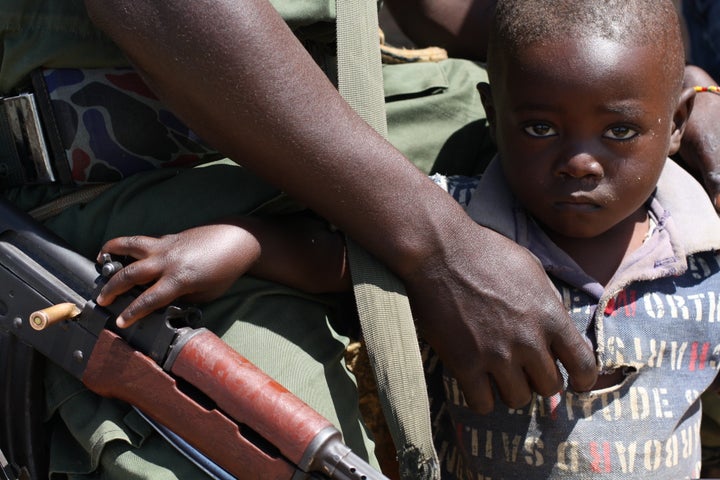
The message is "Stop Kony." The time frame is the year 2012. There's even an "action kit." Kony 2012 represents both the potential and the pitfalls of social media based activism. The film has spread a message worldwide almost instantly; at present it has over 70 million views on youtube. In the process of this massively successful awareness campaign, however, Kony 2012 reduces the information that it aims to spread to simplistic and sometimes infantile soundbites.
Kony 2012 is not trying to be a documentary. It doesn't offer a history of the Lord's Resistance Army, nor does it present an opinion as to how the current efforts to arrest Joseph Kony should be modified in order to be more successful. Instead, the video has a very simple message: Joseph Kony is evil and he must be stopped.
In his voiceover, filmmaker Jason Russell speaks in slow, short sentences about Joseph Kony and Invisible Children Inc.'s efforts to stop him. The story of Joseph Kony is framed by Russell's explanation of the "bad guy" to his toddler son:
"Joseph Kony, he has an army, and what he does is he takes children from their parents and he gives them a gun and he makes them shoot and kill other people."
By explaining the conflict in this manner, Kony 2012 places its viewers on the same level of comprehension as Russel's son. There's a reason why 30 minute in-depth news features don't go viral, but does a film have to use terms that a toddler will understand in order to be successful?
We aren't asked to understand the history of the L.R.A. or to sit through debates about what the best course of action might be, but only to sign a pledge, buy an action kit and sign up to donate "a few dollars a month" to TRI, an "army of individuals... that give $3 a week so that they can get the message to the masses, fuel global activism and transform policy toward peace."
I commend the filmmakers at Invisible Children Inc. for making a video that in one week has resoundingly achieved its objective: it has made Joseph Kony famous. Millions who watched the video learned about the decades-long conflict in Uganda for the first time. The slogan "Stop Kony" is a great catchphrase to be hashtagged around the twitter-verse, and the awareness that spreads with it is undoubtedly valuable. That the video has over 70 million views is a testament to the power and potential of social media to promote dialogue and -- one hopes -- positive change.
But watching Kony 2012, I feel manipulated. It is as if the filmmaker has found components of successful youtube videos and packed them into 30 minutes. There's a toddler! A dramatic voiceover! Shots of the earth from space, neat graphics, a catchy tune -- even a couple of explosions make it in. The formula is working really well, but the approach is almost insulting and cheap, given the situation that the film is discussing. I don't want to be coddled like a toddler or seduced by filmmaking strategies that appeal to my age demographic. I want to be challenged to understand the world differently.
This is the missed potential that I see in Kony 2012. The film uses social media as a tool for simplification and mass production, rather than as a means of bringing new and productive insight to its viewers. Nonetheless, the thought-provoking dialogue sparked by Kony 2012 is present only because of the original film. The ongoing slew of responses to the video demonstrate that in the age of social media, no one will ever have the last word -- at least as long as the Internet's attention span lasts.